
Transcription
NEW! Open Enrollment MagicDraw Coursesin USA, Europe, and Asia
Open Enrollment Class AnnouncementDo you need MagicDraw training for just yourself or several employees?Want MagicDraw training for a small group but want to get away? We are offering you regular OpenEnrollment classes at a site near you, tocompliment our Onsite training curriculum. MagicDraw training open enrollmentclasses are offered initially in the U.S. andEurope.Check the upcomingopen enrollment classes“Applying UML 2.0 withMagicDraw” in multiplelocations.Check detailed info atwww.magicdraw.com !2
MagicDraw Open Enrollment Locations and MayJunJul1-5Seattle, WA5-9Plano, TX10-14Seattle, Plano, TX16-20Seattle, D,UK18-22,Bangkok,ThailandNovDec4-8Plano, TX27-1Kaunas,Lithuania13-17Bangkok,Thailand3
Why Modeling Is Important? Modeling is the core of modern software development, and speeds upimplementation while elevating quality and user satisfaction. It applies to all software development activities – from requirements to testing. Without efficient modeling skills you cannot be successful in today’s softwaredevelopment!Did You Know?Software Development magazine Salary Survey 2005 has surveyed over 4000 softwaredevelopers and managers and has identified that the MOST important skills needed toproduce quality projects and products are architecture modeling and design (59% of thestaff and 56% of the managers indicated this). The survey ranked this higher thanprogramming, QA, testing, and requirements management. Therefore, don't miss yourchance to spend your training budget on the right education!4
UML in the Software Development ProcessDomain analysis modelVisual concept dictionaryUse case scenariosActivity trailsTest case action flowsTest data object structuresInteractions for test scenariosImplementation architecturePackage structureInteraction scenariosDetailed class and data modelsUser interface “maps”Code generation from UMLVisualization of code structureModel transformationsCode model analysis5
Application of Gained SkillsBusiness Analysts Increase modeling efficiency ofbusiness processes that captureuser desires Perform domain analysis Participate in creating UML andother standards based models Database Designers Design database architectureIntrospect existing databasesGenerate database tablesTransform class diagrams todatabase schemas System Analysts & Architects Apply UML for differentarchitectural views Transition system models frombusiness models Manage modeling teamwork Developers Define package structurePrepare detailed class modelsModel interactionsVisualize deploymentReverse and visualize code 6
Contents of MagicDraw & UML Training Courses7
A Case Study: Domain ven for overdueis given d by0.*1.*CategoryPerform domain analysis by modeling domain entities and theirrelationships using simplified class diagram. This diagram will serve asa visual dictionary of concepts. It will also be a starting point for yourdesign-level data model. With MagicDraw you can generate dictionary in HTML format8
A Case Study: Use Case ModelFind itemMake item's reservation include ReaderReview reader's history include Register items' returnextension pointsoverdueAnalyze functional requirements byidentifying user roles – actors – andassociating them to their use cases. With MagicDraw you candocument use cases and generateuse case documentation frommodel. extend (overdue)LibrarianRegister items' loanPenalize for overdue9
A Case Study: Activity Diagram for Use Case ScenariosModel abstract use caseimplementation by creatingactivity diagrams visualizingactivity flows for primary andsecondary use case scenarios.Identify readerShow list ofloaned itemsSelect returned items[overdue][on time]Record return dataPenalize for overdue You can hyperlink use cases tothe activity diagrams modelingtheir scenarios You can decompose activitydiagram elements usinghyperlinks to detailed diagrams Assign activity diagrams as usecase primary and secondaryscenarios, which includes themin use case documentation10
A Case Study: Robustness temPerform the robustness analysis to identify the major components inlayered architecture:user interface boundaries, business logic controls, and data entities.11
A Case Study: Package inSpecificsPrepare package dependencies diagram to group your implementationclasses in appropriate way. This will help you maintain the code wellstructured and avoid design flaws such as cyclic dependencies ordependencies on unstable parts.12
A Case Study: Interactions boundary : ReaderProfile: Reader control : LoanManager entity : Loan control : NotificationServicerefLogin1: select rezervations for canceling2: cancelReservations()loop[for each reservation ]3: cancelReservation()4: inactivate()5: getWaitingOrder6: notifyUser(-)Model component interactions for use case scenarios in order to find out newmethods in existing classes or even new classes with specific responsibilities.13
A Case Study: Detailed Class ModelReader-firstName : String-lastName : String-birthday : date-email : String1-reader1Penalty-suspendedUntil : date-loaner1-overdueLoanLoan-dateReserved : date-dateLoaned : date null-dateReturned : date null-book10.*Item-title : String-description : String-price : floatBook-ISBN : String-numberOfPages : int-edition : int-published : date-categories1.*Category-name : String-description : String-childs0.*-parent0.1AudioRecord-artist : String-label : String-released : dateCreate detailed class diagrams to capture your object-oriented datamodel. Later you will be able to transform them into executable code –database DDL scripts, XML schemas, Java code, etc.14
A Case Study: Implementation ArchitectureWeb ClientHTTPJ2EE Application Server artifact JSP pages artifact BrowserDefine the major artifactsthat manifestimplementation of yourcomponents. EJB-JAR EJBServices.jarLocal Client artifact AdminGUI.jarTCP/IP EJB-JAR EJBEntities.jarJDBCIndicate how they aredeployed on hardwarenodes, their interdependencies andcommunicationprotocols.Database Server artifact Database15
A Case Study: Prepare Platform Specific Models client page index.html form login submit {parameters name, password} EJBSessionBean SystemAccessService login( username : String, password : String ) : boolean server page LoginHandler.jsp builds builds dao User client page error.html client page main.html getUser( username : String ) : User comparePassword( password : String ) : booleanIdentify implementation technologies and software component types.Prepare models that are ready for code generation!16
Learn MagicDraw Features!Increase efficiency of tool usage by learning how to: Organize your model elements and hyperlink them for easynavigation Prepare model content diagrams for easy model navigation Find all generalized, associated, and dependent classes fora given class Reuse model element in multiple diagrams with differentlevel of details Document your use case models and generate use casespecification Transform OO data models to database structure and XMLschemas Create business process and system documentationfollowing style guidelines and using layout tools Visualize and analyze code structure after reversing it toUML model Decompose large models into independent modules andprofiles Compare model versions and find out changes in modeland diagrams Create and associate analysis-, design-, andimplementation- level models andand much more!17
Sample MagicDraw Feature: Comparison of Two Model Versions (1)Added elementDeleted elementsModified element – a diagram18
Sample MagicDraw Feature: Comparison of Two Model Versions (2)Find out modified parts in diagrams!19
Why Train with Us?1.2.3.4.Our instructors are MagicDraw experts – people who participate in developmentof the product.We have applied UML in numerous projects including development ofMagicDraw itself. We practice what we preach!Our instructors are certified by OMG as UML professionals.We always get good reviews by our customers. Remember to order Training with every MagicDraw purchase.Consider adding one of our Professional Services consultants as an on-staff mentorin your first MagicDraw project.“Course used our own project as case study and this was very effective. Dariusand the team were very good at understanding our issues and showing howUML and MagicDraw can help us. Very impressive, friendly and helpfulinstructor.”Colin Manning, Lead Engineer, ts.com20
InstructorDr. Darius ŠilingasMagicDraw Training Department LeaderDarius has been working with No Magic from 1998. He participated as Java developer inmultiple international projects. Darius has developed a modeling case study MagicLibrary andleaded multiple MagicDraw training courses worldwide. He also taught commercial courses onRequirements Management with UML, Software Design with UML, and Java/J2EEProgramming. Darius received PhD from Vytautas Magnus University, where he teachescourses Software Development Methodology and Software Engineering. Darius participatesfrequently in various conferences and presents talks on UML and other software developmenttopics. He holds the following professional certificates: Microsoft Certified Professional Sun Certified Programmer for the Java 2 Platform 1.4 OMG-Certified UML Professional Intermediate21
1. Our instructors are MagicDraw experts -people who participate in development of the product. 2. We have applied UML in numerous projects including development of MagicDraw itself. We practice what we preach! 3. Our instructors are certified by OMG as UML professionals. 4. We always get good reviews by our customers.
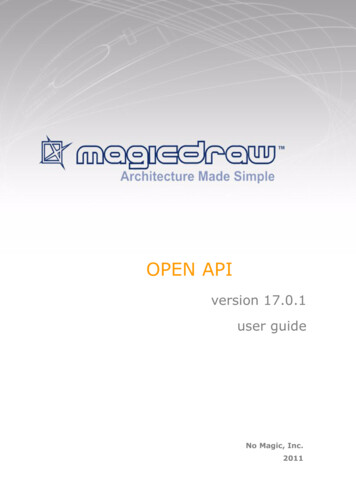
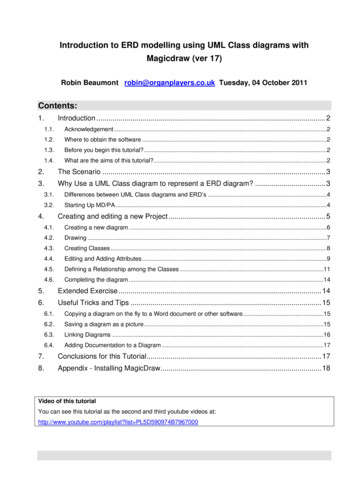

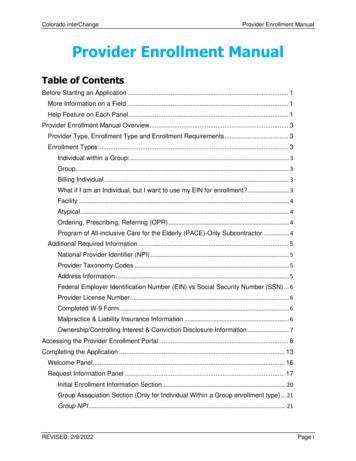

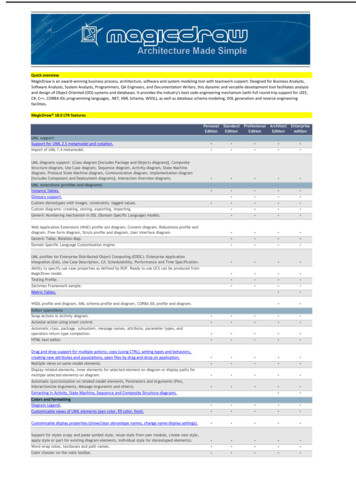

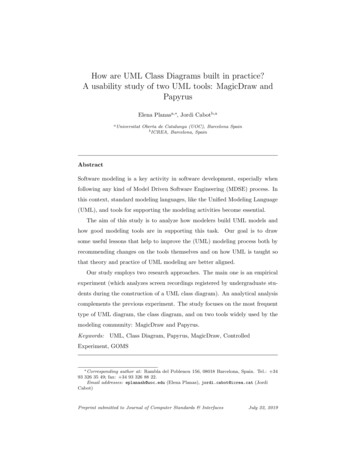
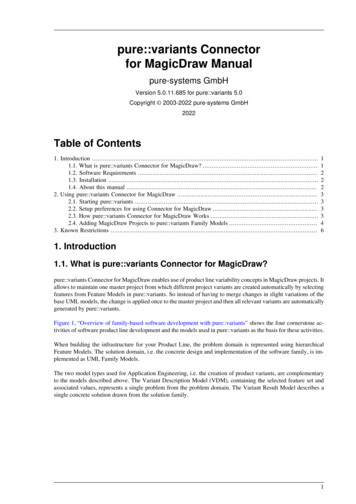
![10YearDresdenOCL-Model Validation in MagicDraw [Kompatibilitätsmodus]](/img/49/5magicdrawocl-silingas.jpg)
